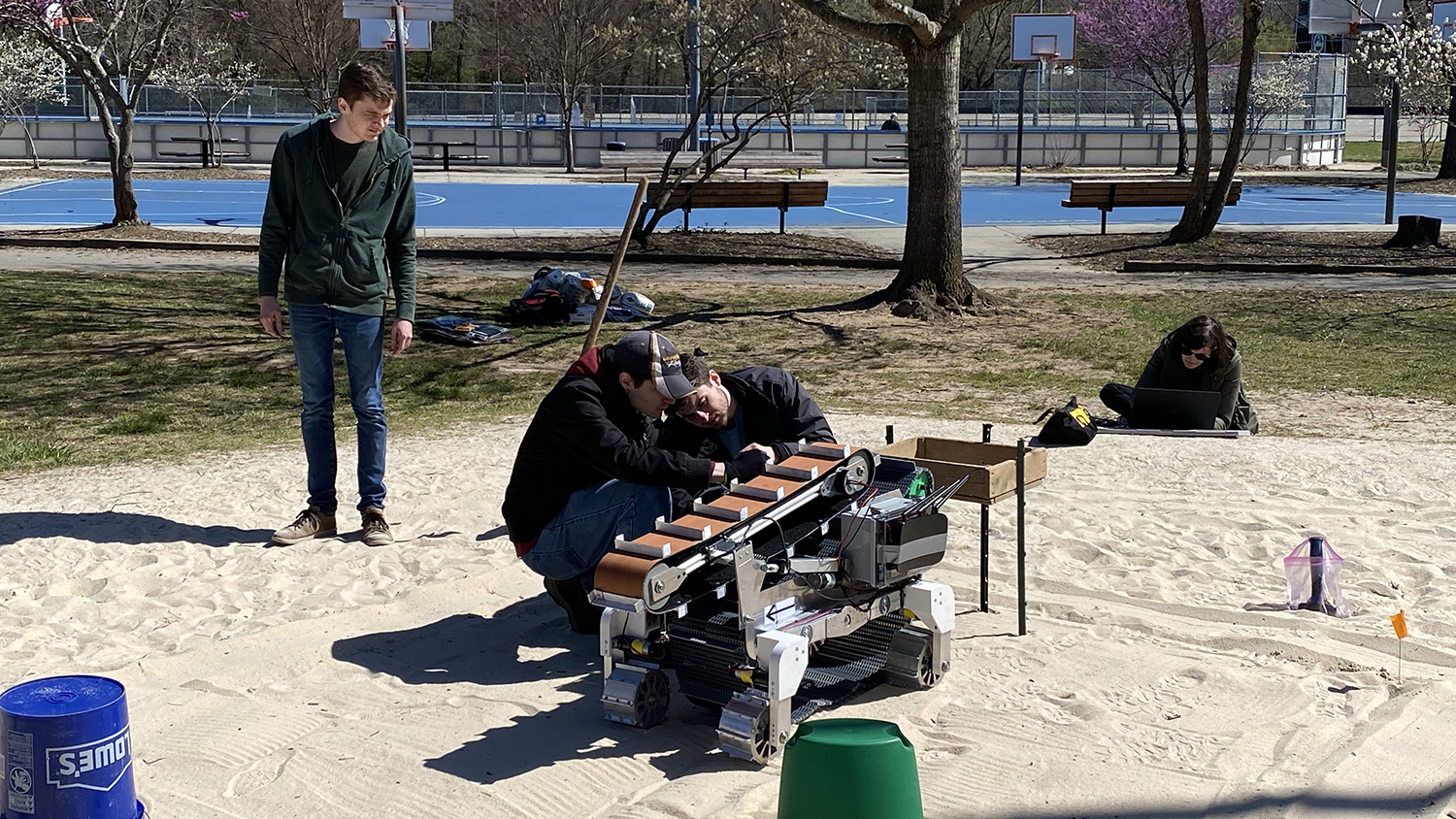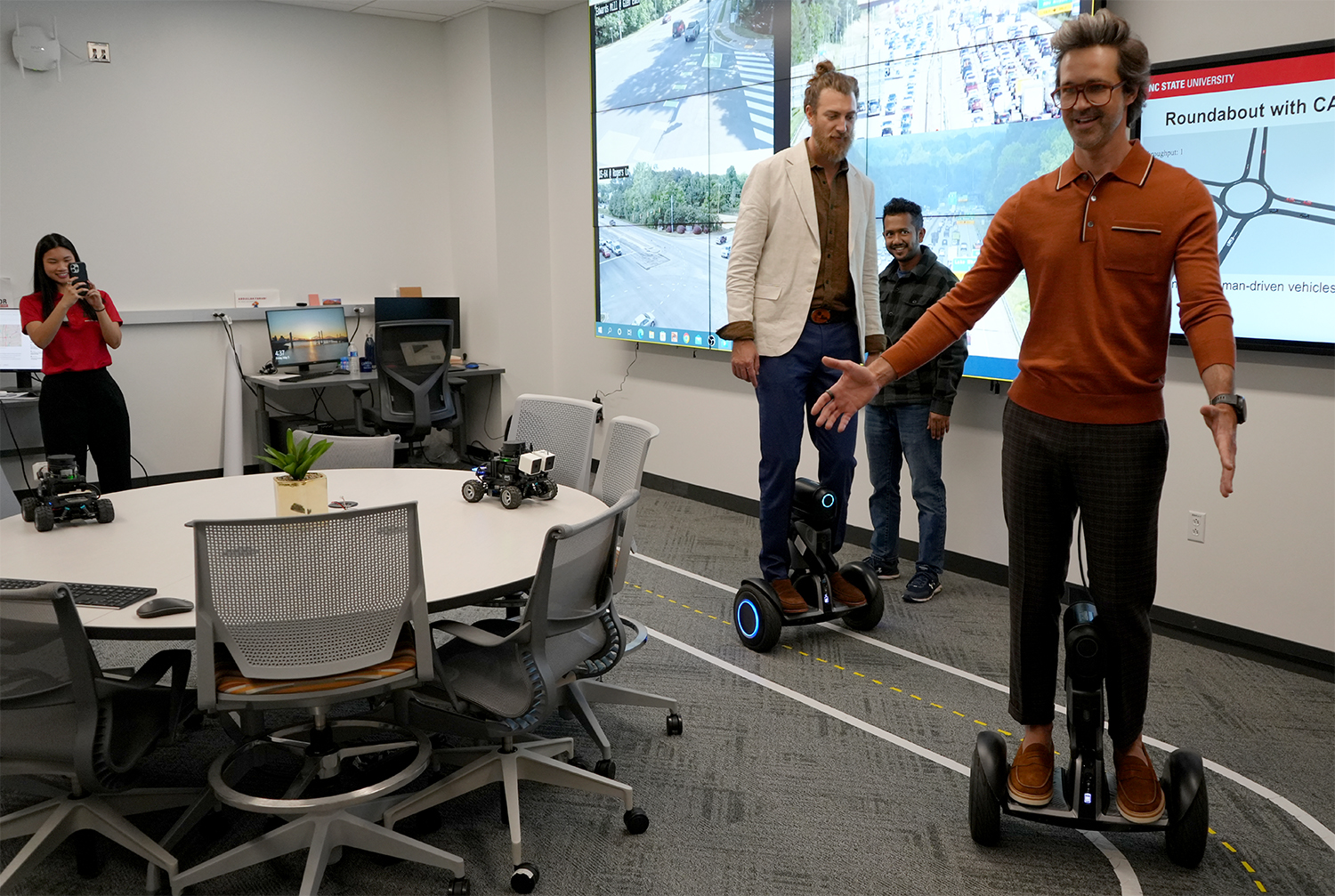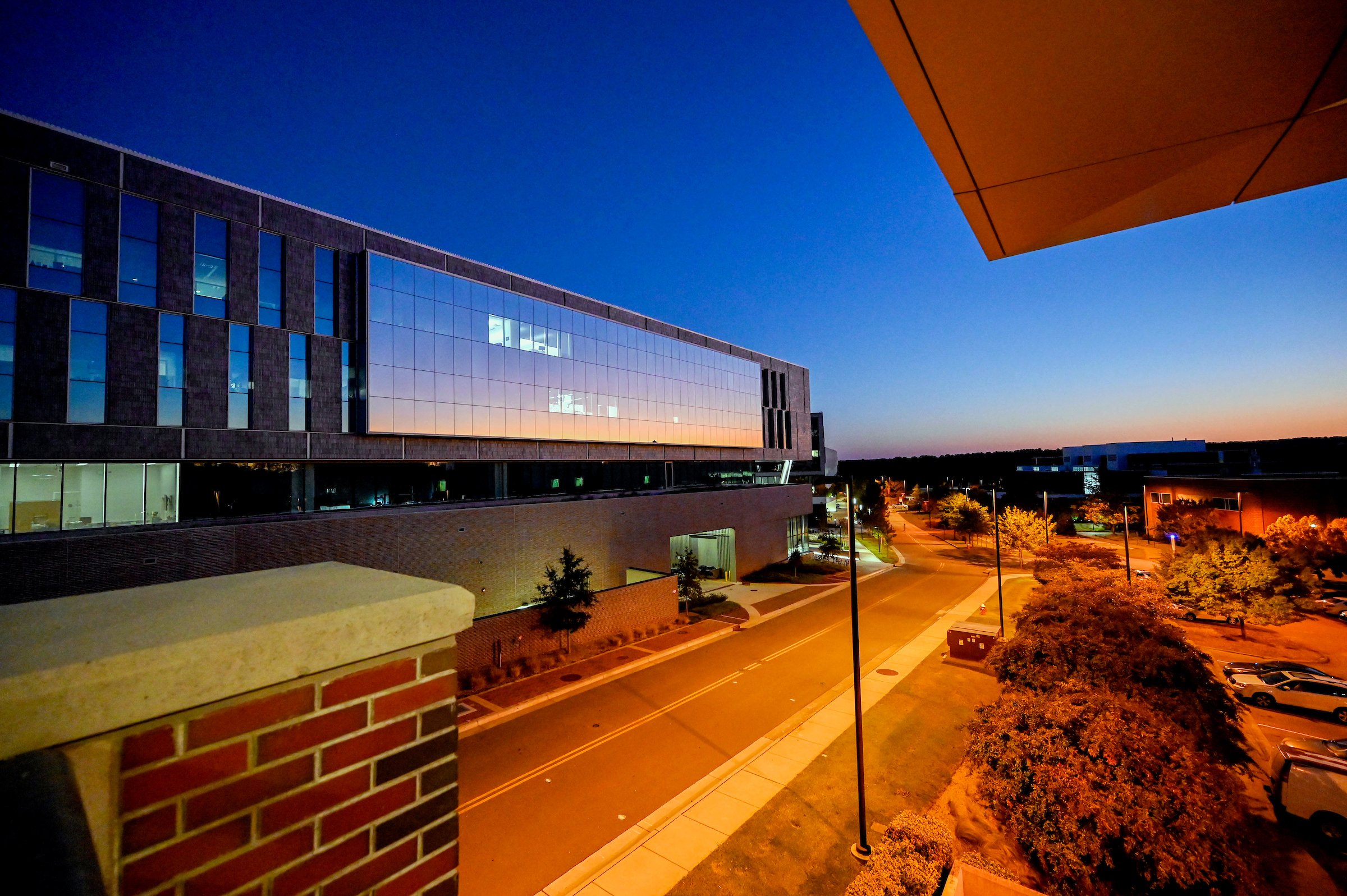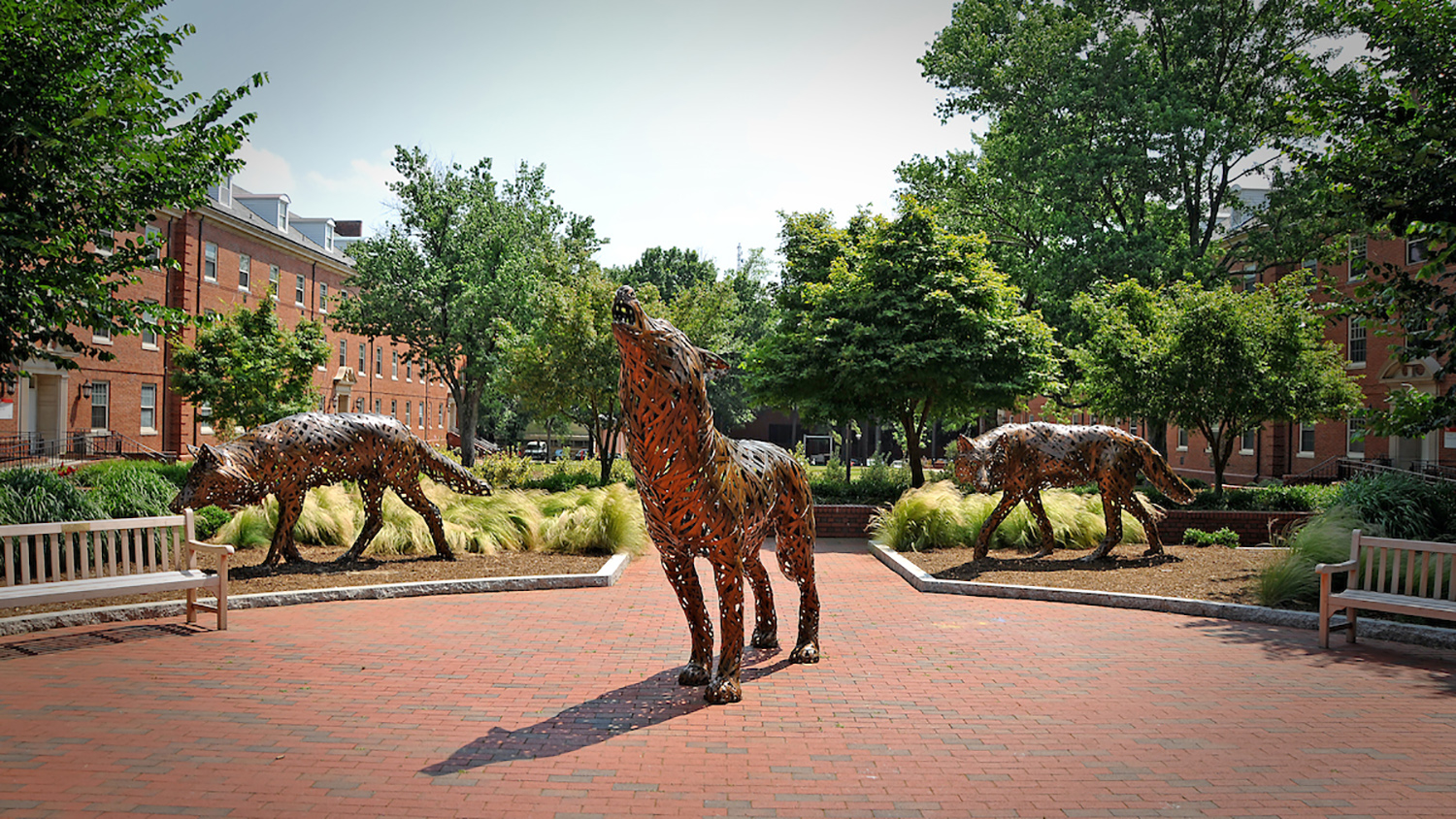Asheville-based mechatronics engineering program produces well-rounded engineers and a close community

Vinson Williams, mechatronics engineering ’21, couldn’t decide between mechanical and electrical engineering.
“It sent me down a rabbit hole — why can’t I do both?” he said. “And I found mechatronics and robotics.”
Mechatronics engineering, a combination of mechanical engineering, electrical engineering and computer science, offers students a breadth of skills and knowledge that prepares them for careers in a wide range of industries, especially in increasingly automated fields.
Williams started researching mechatronics, and he found a program that seemed to be a great fit: the Joint Bachelor of Science in Engineering (JEM) degree with a mechatronics engineering concentration offered jointly by North Carolina State University and the University of North Carolina at Asheville.
Based fully in Asheville — there is no mechatronics engineering degree program on NC State’s campus in Raleigh — the program had small class sizes and was located in a place that, as Williams put it, seemed pretty nice.
“It’s definitely an interesting degree, and it’s been super helpful,” said Williams, who is now a Ph.D. student in aerospace engineering at NC State. “It’s like, you can build a robot from scratch — you know how all the pieces work together.”
Locally grown
There are two parts to the Joint NC State / UNC Asheville Engineering Programs: the 2+2 program, where students begin at UNC Asheville and then transfer to NC State to finish their engineering degrees, and the mechatronics engineering program. Both were established in part because of support and input from local industry partners that wanted to foster more engineering talent in western North Carolina.
The two universities began piloting a mechatronics engineering program in 1998, with degrees awarded by NC State. In 2004, the University of North Carolina System developed the official JEM program. Students stay on UNC Asheville’s campus, but graduate with a degree from both institutions.
“They are just as much NC State students as the students who are here [in Raleigh],” said Linda Krute, director of distance engineering education programs at NC State.
Students take liberal arts and other core science and math classes through UNC Asheville. Their engineering classes are taught by NC State faculty members. Some are taught in person by an NC State faculty member based in Asheville, while others are streamed live from Raleigh to their classroom.
UNC Asheville is the UNC System’s sole liberal arts and sciences university. Many of the engineering students who come through the program are interested in the “why” behind what they’re building, explained Linnea Linton, associate director of the Joint Engineering Programs.
“I’ve seen our students develop a very strong ethical idea of ‘How will my work as an engineer impact society, impact the environment, impact any various numbers of ideas?’” she said. “And I think that comes from the very strong liberal arts core at UNC Asheville.”
Many students come from around the state, country and world because they are drawn to this unique program.
Others are settled in western North Carolina, and some have families. The program makes it possible for them to land an engineering job close to home, which is one of the program’s original goals.
…You get that quality of education in engineering from NC State, but you get to stay small, which a lot of students prefer.”
– Eli Buckner
Western North Carolina native and alumnus Eli Buckner is an assistant teaching professor at NC State based in Asheville. He earned a B.S. in mechatronics engineering in 2016, and a Ph.D. in electrical engineering in 2021 from NC State.
He is one of the many who chose the program because he wanted to stay in the area, while still getting an engineering degree from NC State. As a student, he enjoyed getting to know his classmates, and now as a professor, he likes the close-knit environment.
“The community becomes really a very, very good part about this program,” he said. “Because you get that quality of education in engineering from NC State, but you get to stay small, which a lot of students prefer.”
The joint program is not without its challenges. As dual-enrolled students, they have to navigate two different schedules, including different start dates and breaks. But it brings them closer together. Buckner said he made a lot of memories on UNC Asheville’s campus taking engineering classes while the non-engineering students were on spring break.
A growing field
The need for mechatronics engineers is increasing as electrical and mechanical systems become further integrated.
David Ramsey, director of the Joint Engineering Programs, said he would like to follow the same growth rate as the College of Engineering: a 40-percent increase over five years to about 300 students.
Earlier this year, Ramsey got a call from a South Korean company starting an electric vehicle battery manufacturing plant a few hours away in Georgia.
“They love the idea of mechatronics engineers for their factory,” he said. “This is a heavily automated, robot-centric facility more like a semiconductor cleanroom than anything else. And they think mechatronics engineers are ideal for what they’re going to have to do in the workplace to control all this automated equipment.”
Local support has been an integral part of the program, with companies offering internships. The Industrial Advisory Board helps guide the program and spread awareness of mechatronics engineering. Many students attend UNC Asheville with plans to accept an engineering position in western North Carolina.
But ultimately, the program’s goal is to prepare students to be competitive at a national or international level.
“As we graduate students today, some choose to stay in the area and help local industry,” Ramsey said. “At the same time… they’re able to compete on a national stage, and they can go to big name companies, anywhere in the country or even in the world.”
- Categories:


